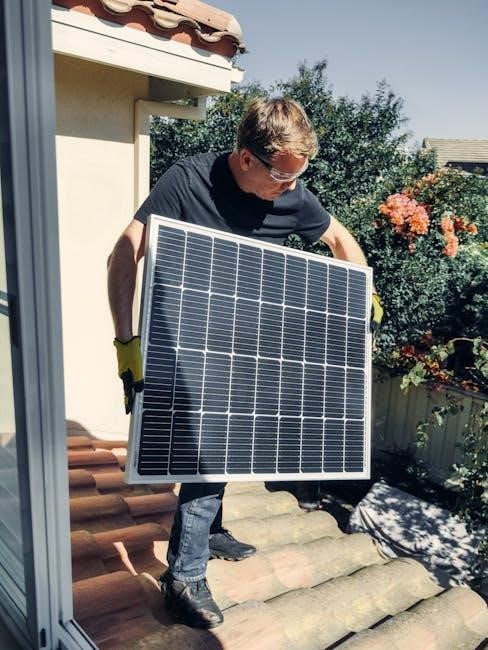Importance of Proper Wiring
The importance of proper wiring in a solar panel system cannot be overstated, as it directly affects the overall performance and safety of the system. Proper wiring ensures that the solar panels are connected correctly, allowing them to operate at maximum efficiency and produce the maximum amount of electricity. Incorrect wiring can lead to reduced system performance, electrical shocks, and even fires. Therefore, it is crucial to follow a well-designed wiring diagram and to use the correct materials and techniques when installing a solar panel system. A good wiring diagram will take into account the specific requirements of the system, including the type and number of solar panels, the inverter, and the battery bank. By following a well-designed wiring diagram, installers can ensure that the system is safe, efficient, and reliable, and that it will provide years of trouble-free operation. This is essential for any solar panel system.
Understanding Solar Panel Diagrams
Understanding solar panel diagrams is a critical step in designing and installing a solar panel system. A solar panel diagram is a visual representation of the system’s components and their connections. It shows how the solar panels are connected to the inverter, battery bank, and other components. The diagram typically includes symbols and labels to identify each component and their relationships. By studying the diagram, installers can identify the correct wiring and connections, ensuring that the system is installed correctly and safely. The diagram also helps to identify potential issues and troubleshoot problems. A well-designed diagram can save time and reduce errors, making it an essential tool for anyone involved in solar panel installation. The diagram should be clear, concise, and easy to read, allowing installers to quickly understand the system’s layout and connections. This is crucial for a successful installation.
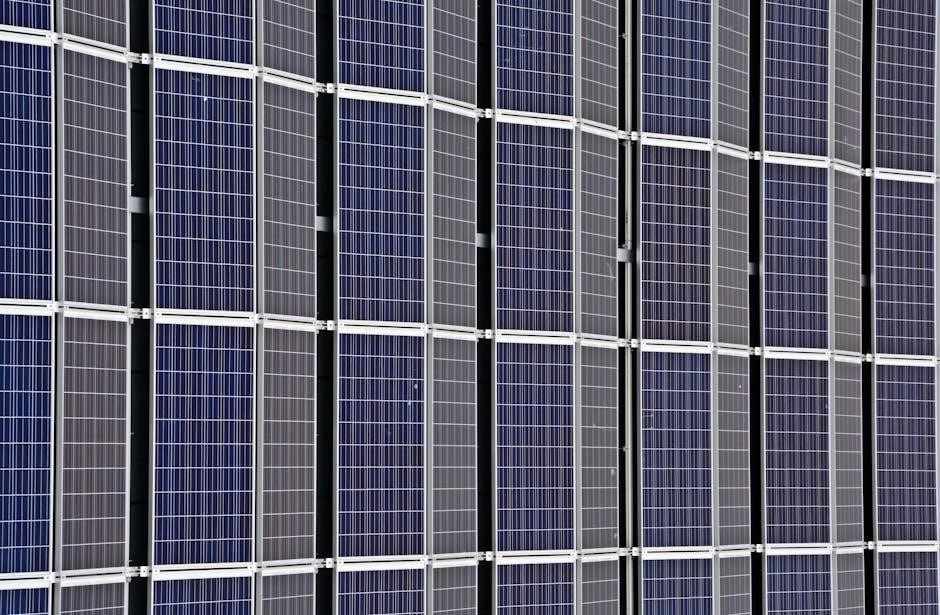
Solar Panel Wiring Diagrams
Solar panel wiring diagrams provide visual guides for installing solar panels correctly and safely always using standard symbols and labels for clarity and accuracy online.
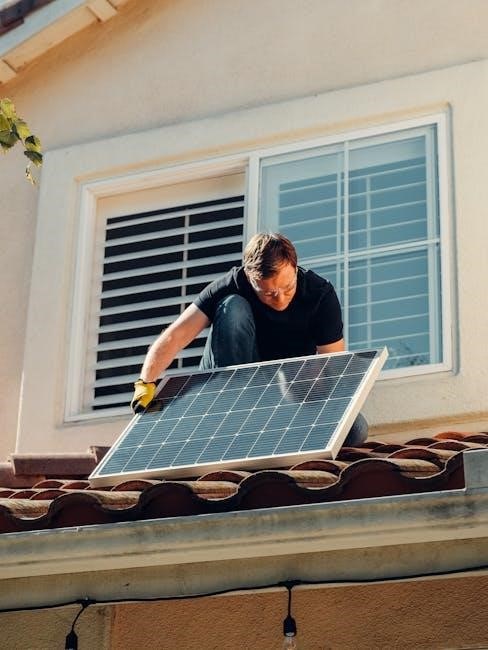
Series and Parallel Wiring
Series and parallel wiring are two common configurations used in solar panel systems, each with its own advantages and disadvantages.
In a series wiring configuration, solar panels are connected one after the other, allowing the voltage of the system to increase while the current remains the same.
This configuration is often used in string inverter arrays with four or more panels, as it allows for higher voltage and efficiency.
On the other hand, parallel wiring involves connecting solar panels in a parallel circuit, where each panel has its own separate circuit.
This configuration is often used in systems with multiple panels and inverters, as it allows for greater flexibility and scalability.
The choice between series and parallel wiring depends on the specific requirements of the solar panel system, including the type of inverter, panel configuration, and overall system design.
Proper wiring configuration is crucial to ensure safe and efficient operation of the solar panel system.
By understanding the differences between series and parallel wiring, users can design and install their solar panel systems with confidence and accuracy, using online resources and wiring diagrams for guidance and support.
String Inverter Arrays
String inverter arrays are a common configuration used in solar panel systems, where multiple panels are connected in a series to form a string, and then connected to an inverter.
This configuration is often used in residential and commercial solar panel systems, as it allows for efficient and cost-effective energy production.
String inverter arrays typically consist of 4 to 12 panels connected in series, with the number of panels depending on the system’s voltage and power requirements.
The inverter is then used to convert the DC power produced by the panels into AC power, which can be used to power electrical devices or fed into the grid.
Proper design and installation of string inverter arrays are crucial to ensure safe and efficient operation, and users can refer to online resources and wiring diagrams for guidance and support.
By understanding the principles of string inverter arrays, users can design and install their solar panel systems! with confidence and accuracy, and maximize their energy production.
String inverter arrays offer a reliable and efficient way to harness solar energy, and are a popular choice for many solar panel system installations, with many resources available online.
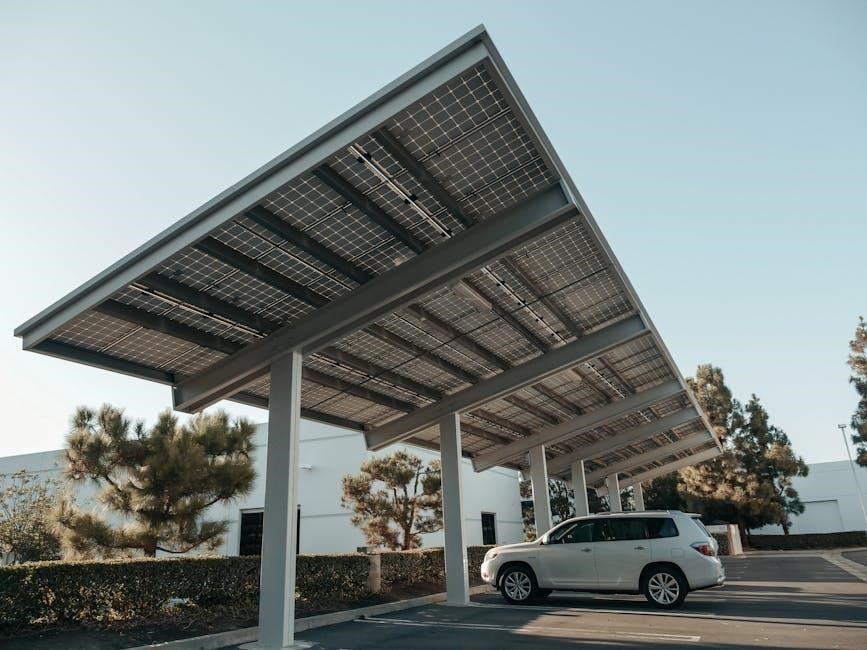
Components of a Solar Panel System
Solar panel systems consist of various components, including panels, mounting hardware, and electrical connections, ensuring a safe and efficient energy production process always with proper installation methods.
Inverters and Charge Controllers
Inverters and charge controllers are crucial components of a solar panel system, responsible for converting DC power to AC power and regulating the flow of energy to batteries. The inverter plays a key role in ensuring the solar panel system produces a safe and usable energy output. Charge controllers, on the other hand, prevent overcharging and damage to the batteries, while also providing a means of monitoring the system’s performance. Proper selection and installation of these components are essential to ensure the overall efficiency and safety of the solar panel system. By choosing the right inverter and charge controller, users can maximize their energy production and minimize the risk of system failure. With a wide range of options available, it is essential to carefully consider the specific needs of the solar panel system and select components that meet those needs, ensuring optimal performance and reliability always.
Batteries and Mounting Brackets
Batteries and mounting brackets are essential components of a solar panel system, providing a means of storing excess energy and securing the panels in place. The type and size of battery used will depend on the specific needs of the system, with deep cycle batteries being a popular choice for solar panel systems. Mounting brackets, on the other hand, must be designed to withstand various environmental conditions, such as wind and weather, while also providing a secure and stable base for the solar panels. Proper installation of these components is critical to ensure the overall performance and safety of the system. By selecting the right batteries and mounting brackets, users can ensure their solar panel system operates efficiently and effectively, while also minimizing the risk of damage or malfunction. With a wide range of options available, careful consideration must be given to the specific needs of the system to ensure optimal performance and reliability always.
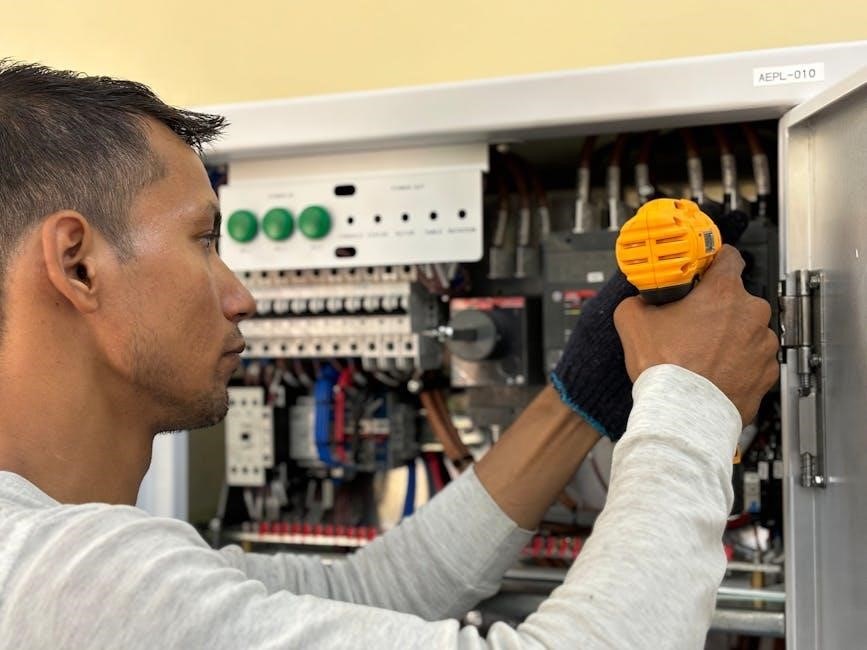
Designing a Solar Panel Wiring Diagram
Designing a solar panel wiring diagram requires careful planning and attention to detail always using equipment specifications and documentation to ensure compliance with regulations and safety standards effectively.
Equipment Specifications and Documentation
To ensure a safe and efficient solar panel installation, it is crucial to create detailed documentation of equipment specifications and wiring diagrams. This includes listing the types and models of solar panels, inverters, charge controllers, and batteries used in the system. The documentation should also include wiring diagrams, installation instructions, and safety precautions to be taken during the installation process. By having this information readily available, installers can refer to it as needed and ensure that the system is installed correctly. Additionally, this documentation can be useful for future maintenance and troubleshooting purposes. It is also important to note that the documentation should be compliant with local building codes and electrical regulations. By following these guidelines, individuals can create a comprehensive and accurate documentation of their solar panel system, which is essential for a successful and safe installation. Proper documentation is essential for any solar panel system.
Compliance with Local Building Codes
Compliance with local building codes is a critical aspect of solar panel installation, ensuring the system is safe and meets regulatory requirements. The National Electric Code (NEC) provides guidelines for electrical installations, including solar panel systems. Local authorities may have additional requirements, such as permits and inspections. It is essential to research and understand the specific codes and regulations in your area before installing a solar panel system. This includes obtaining necessary permits and scheduling inspections to verify compliance. Failure to comply with local building codes can result in fines, system shutdown, or even safety hazards. By working with licensed professionals and following local regulations, individuals can ensure their solar panel system is installed correctly and safely. Compliance with local building codes is crucial for a successful and lawful solar panel installation, providing peace of mind and protecting the investment in the system. Local codes vary by location and jurisdiction.
